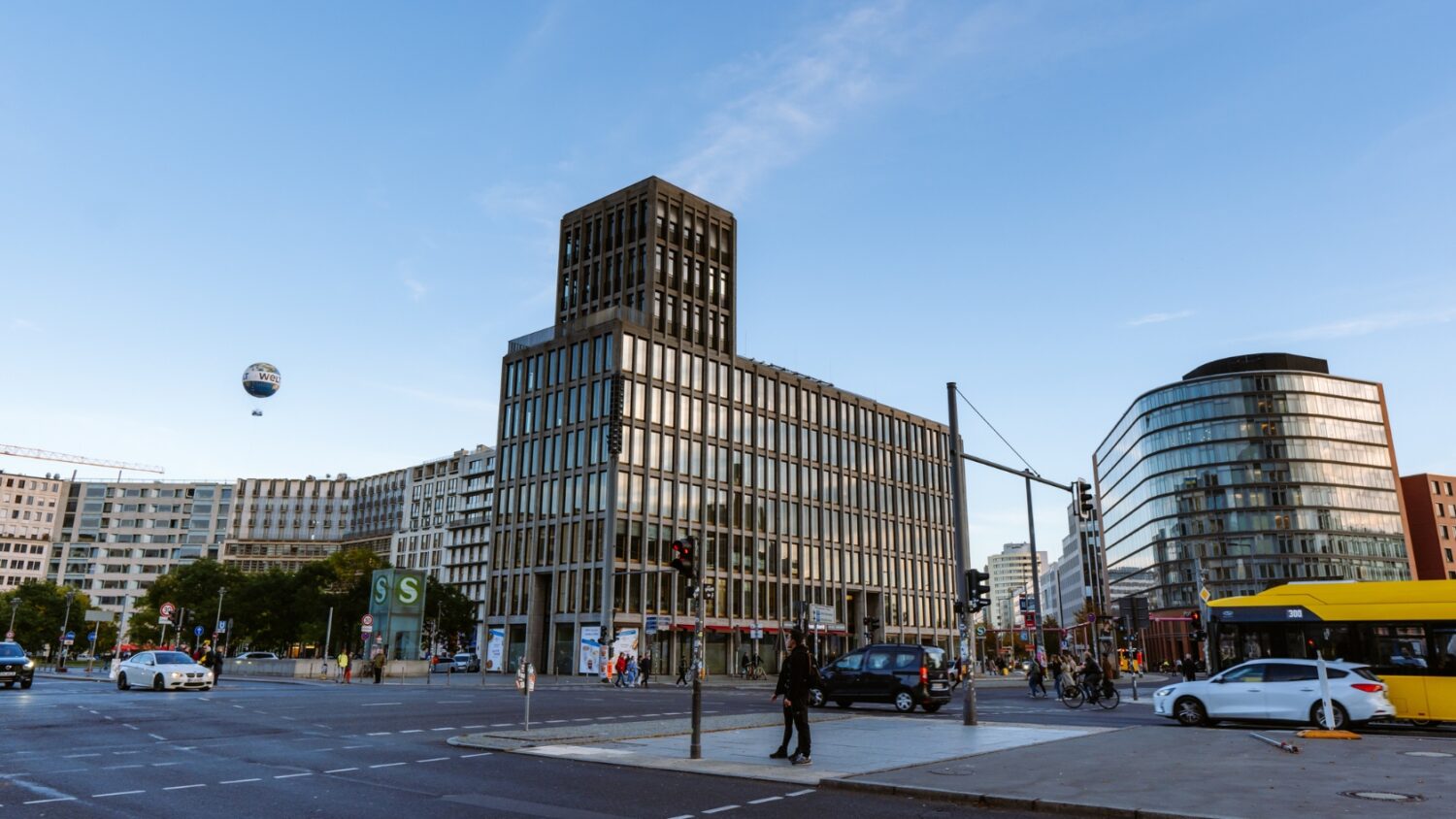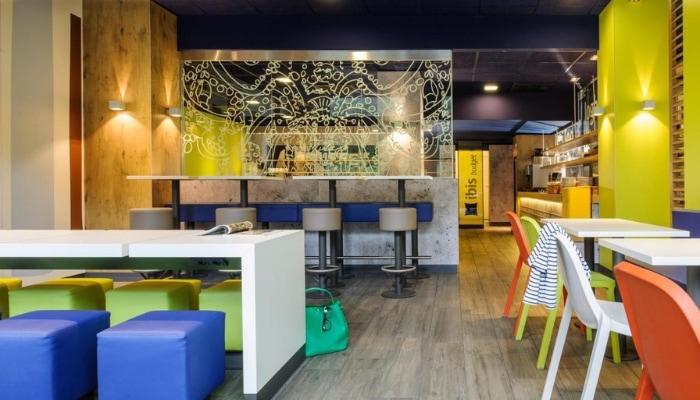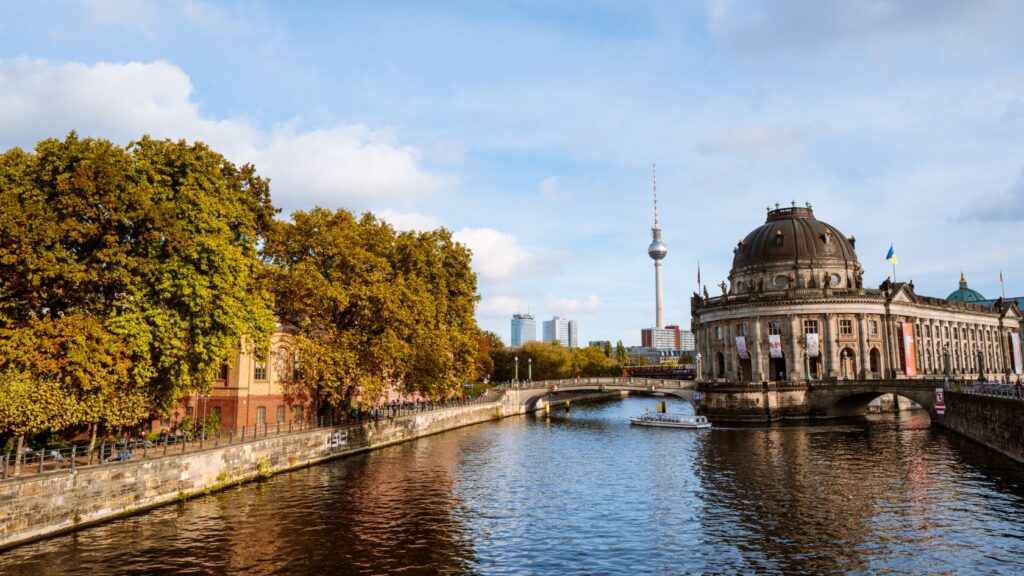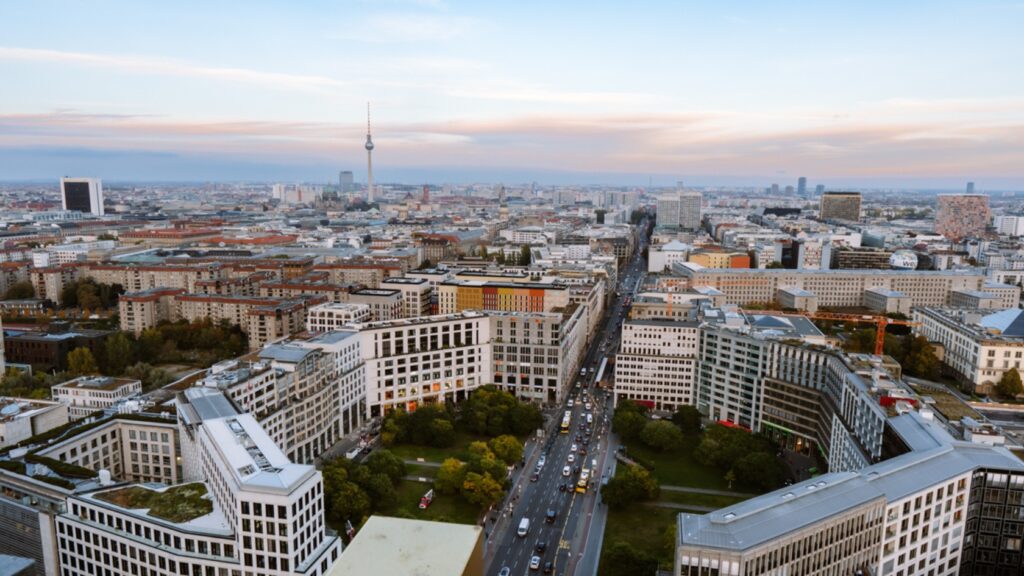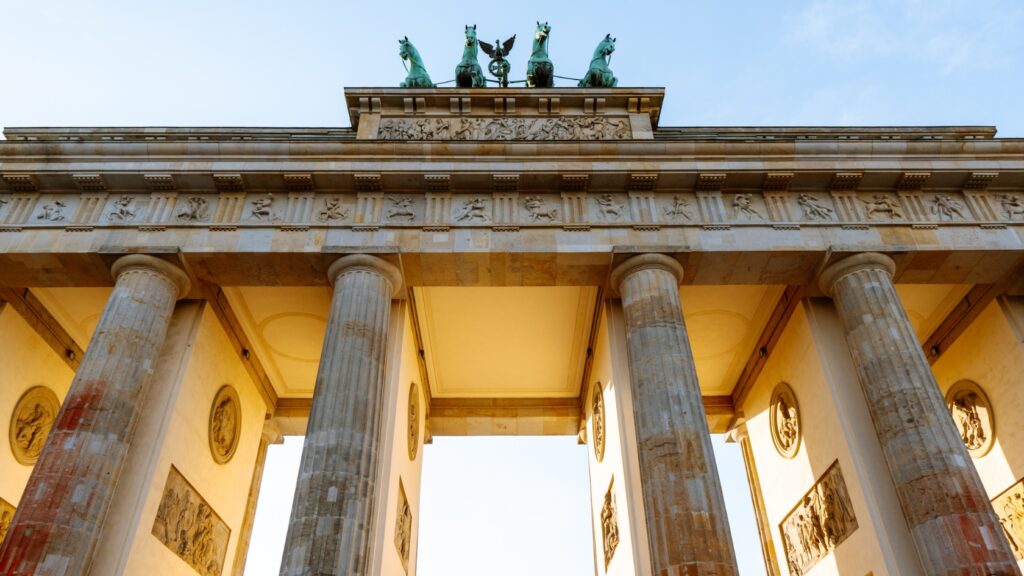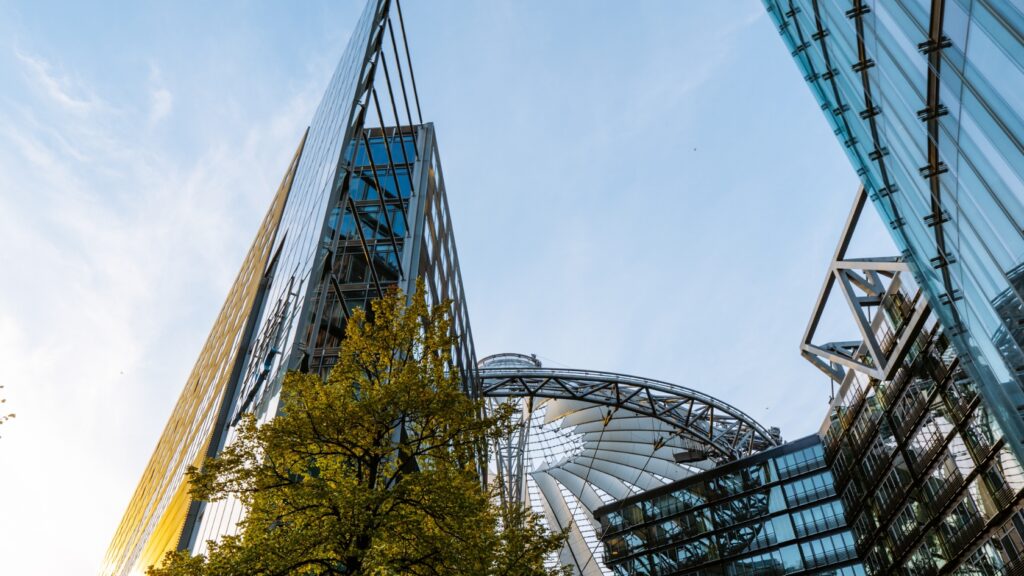In this guide to transport in Berlin, we look at everything you need to know before your trip – how the metro and public transport in Berlin works, how much tickets cost, how to rent a bike and other useful tips.
Note: We regularly update the information in this guide to transport in Berlin. The date of the last update can be found at the beginning of this article.
PUBLIC TRANSPORT AND METRO IN BERLIN
BERLIN TRANSPORT
Berlin boasts a well-organised public transport system operated by Berliner Verkehrsbetriebe (BVG) and Deutsche Bahn (DB). The network includes the U-Bahn (metro), S-Bahn (city trains), trams, buses and ferries, so you can easily get where you need to go.
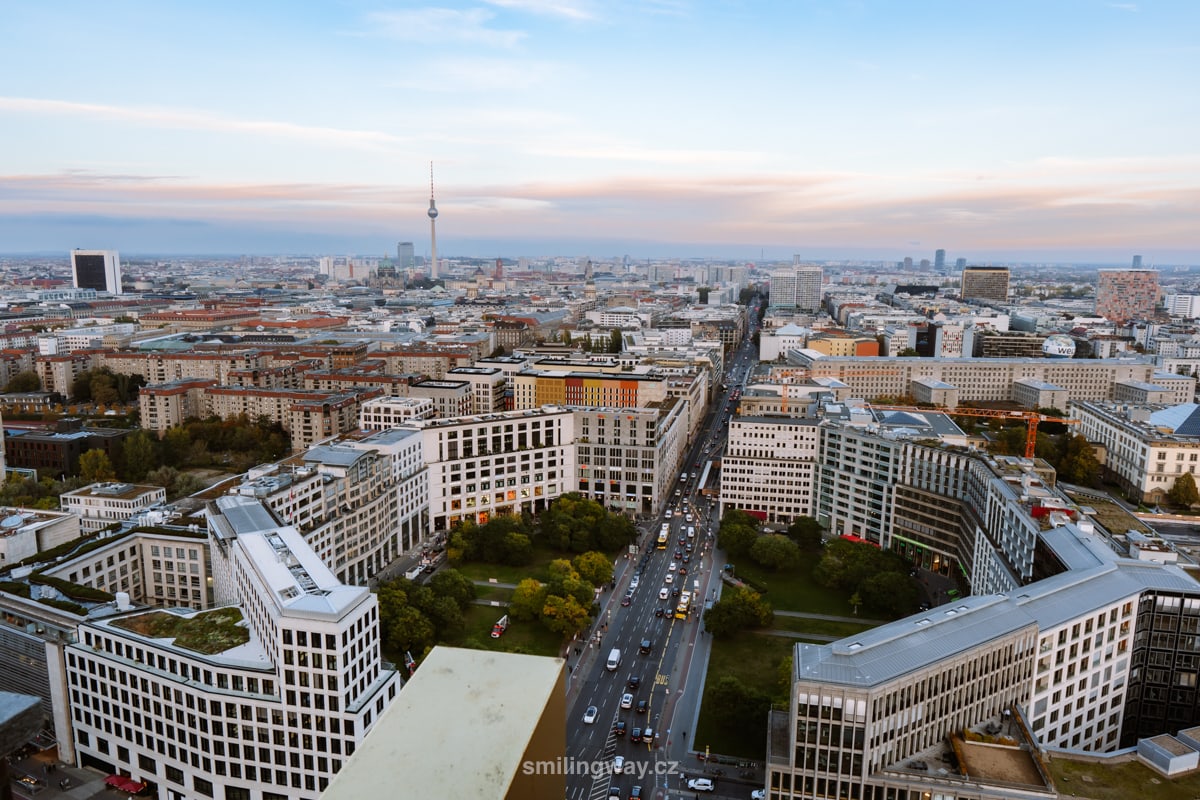
Berlin is divided into several zones for transport purposes, but for you as a tourist this means almost no extra complications. The whole town falls within the AB zone.
However, if you are travelling from the airport or planning a trip to Potsdam, you will need an ABC zone ticket. You can download the public transport map here. You can also find it at all public transport stops and stations in Berlin.
Quick Guide to Berlin
How to save money: Berlin WelcomeCard is a tourist card that allows you to travel around Berlin without restrictions and get discounts on sights and attractions in the city. It includes almost all the famous attractions including the TV tower, AquaDom & SEA LIFE Berlin or Charlottenburg Castle.
Where to stay: Hotel AMANO (stylish hotel near the train station), Hotel Schulz (popular hotel at a good price), Ibis budget Berlin Potsdamer Platz (budget hotel)
How to get around the city: Berlin is well served by the U-Bahn, S-Bahn, buses and trams. You can buy tickets easily via the BVG app or take advantage of unlimited free transport with Berlin WelcomeCard.
U-BAHN (UNDERGROUND) IN BERLIN
The U-Bahn (operated by BVG) consists of ten lines (U1 to U9 and U55) serving more than 170 stations in central and suburban Berlin.
The metro is modern, clean and runs regularly every few minutes. The metro stations are marked U. You can get down by stairs and in some cases by lift.
At selected stations you can change from the U-Bahn to the S-Bahn – everything is perfectly signposted and easy to find your way around. There are also machines at metro stations where you can buy tickets.
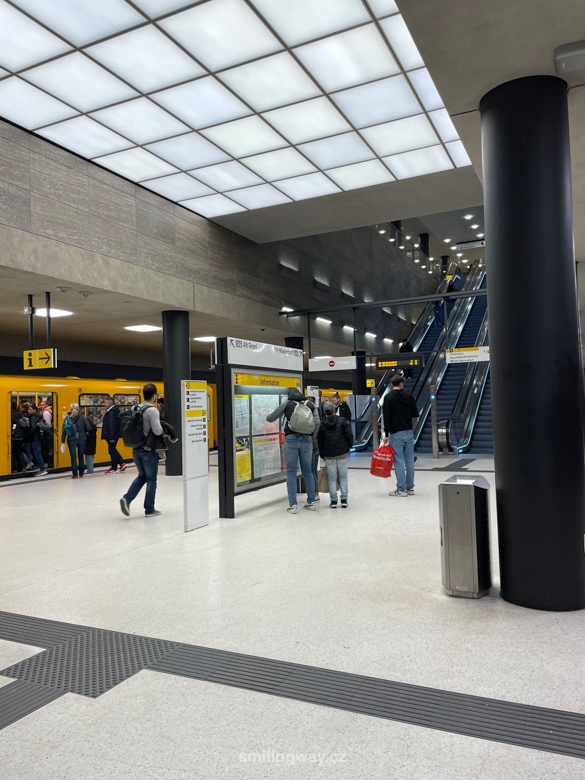
How does the U-Bahn (underground) work in Berlin?
The main difference between the U-Bahn and some European cities is the absence of turnstiles. The U-Bahn is free to use – you don’t have to mark your ticket to get to the platform. This also applies to the output.
Please note: If you are travelling on a paper ticket (more about tickets later in this article), you must mark your ticket on the platform. Here you will see small yellow or red turnstiles (yellow for the U-Bahn, red for the S-Bahn) where you can mark your ticket. Then you can board the metro. Otherwise, you risk a fine of up to €60. This also applies to trams and buses. You do not have to mark the electronic ticket anywhere.
In the centre of Berlin, the U1 and U2 underground lines are the most popular, taking you to Alexanderplatz, Potsdamer Platz and the luxurious KaDeWe department store. North and south Berlin, including Kreuzberg, are connected by the U8 line.
Announcements and digital displays inside the trains provide information about the nearest station and the possibility of changing trains. Some cars are designated as “Quiet Zones”, where no telephones or loud calls are allowed.
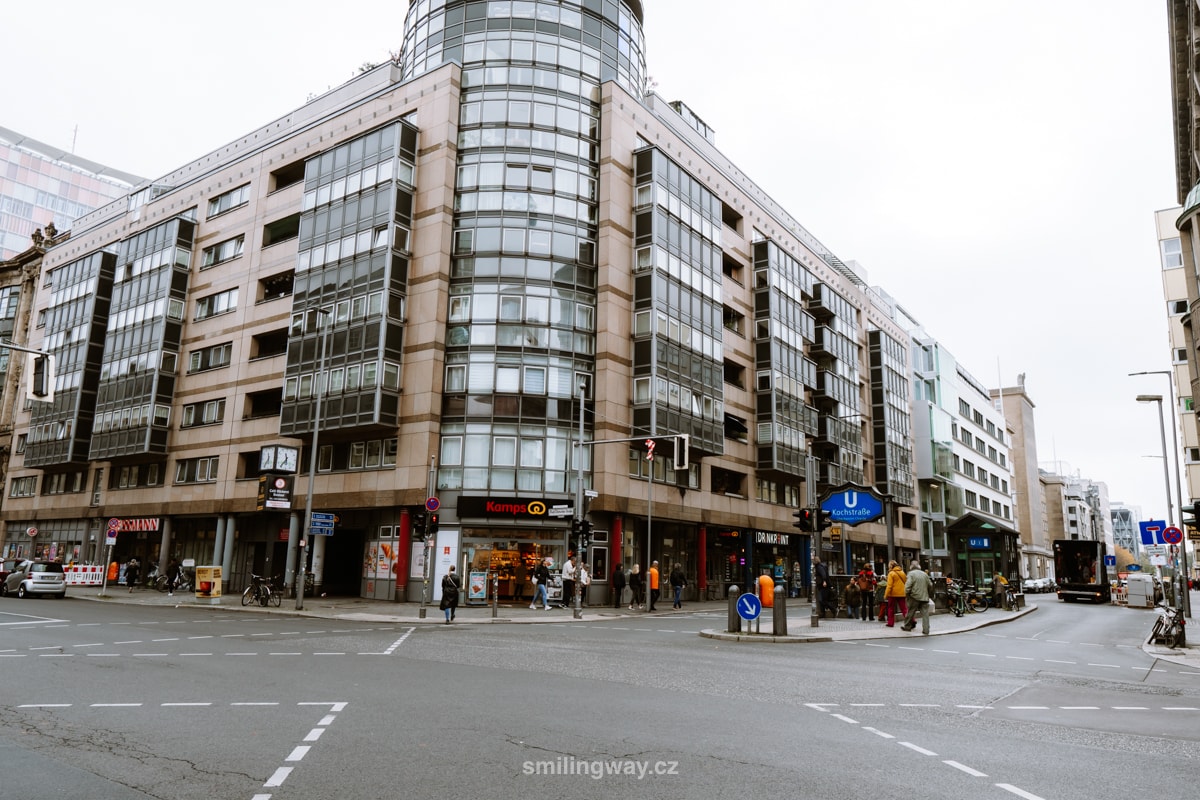
What time does the U-Bahn run in Berlin?
On weekdays, the U-Bahn usually operates between 4:00-1:00. The metro runs every 3-5 minutes at peak times and roughly every 10 minutes at off-peak times. The upcoming times are indicated on the electric board on the platform.
Many lines run 24 hours a day on Fridays and Saturdays, and the metro runs every 15 minutes late at night.
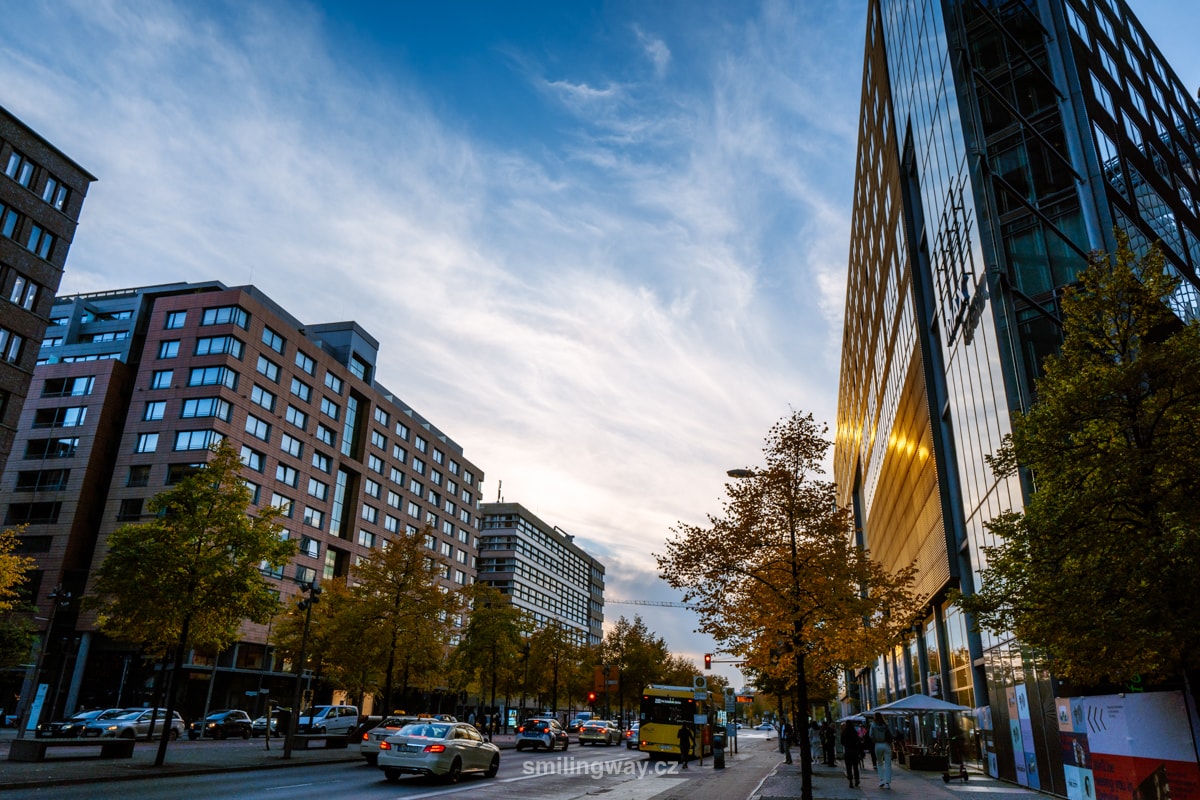
S-BAHN (CITY TRAINS) IN BERLIN
Together with the U-Bahn, the S-Bahn is the fastest way to get around Berlin. You can think of the S-Bahn as a network of high-speed trains that connect the city centre with the surrounding suburbs. Unlike the U-Bahn, it runs mainly on surface and elevated lines.
The S-Bahn is not as modern and can sometimes look a bit shabby, but it is still an efficient and safe way to get around Berlin.
Overground trains serve up to 170 stations from the city centre to the city limits, making them ideal for exploring suburban areas and transferring to regional train services. The network consists of 15 lines, which are marked with S and a number (S1 to S9, S25, S26, S41, S42, S45, S46, S47).
From the outside, you can recognize the S-Bahn station easily – look for the white S in the green circle, or the green S in the green circle. the station sign (Bahnhof).
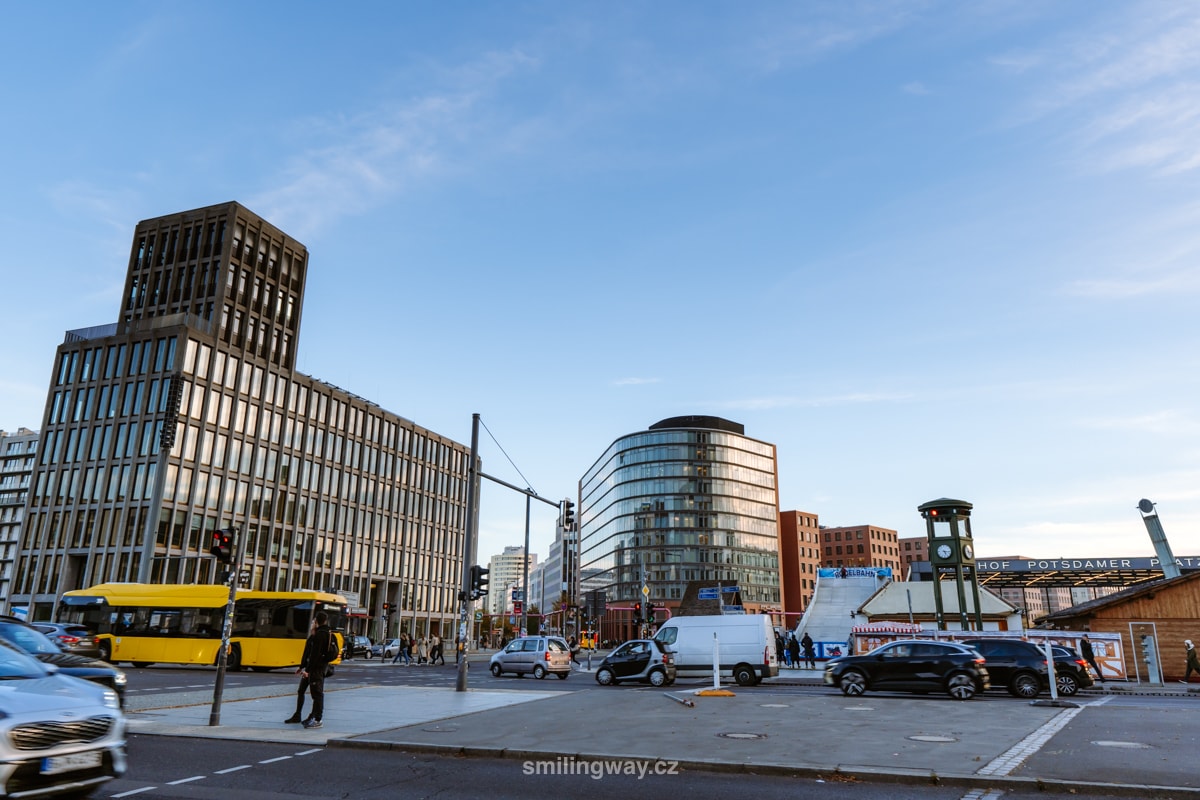
How does the S-Bahn work in Berlin?
Urban trains operate almost identically to the metro, although they are operated by a different company. But everything is integrated into one whole, so as a tourist you won’t know the difference.
If the S-Bahn and U-Bahn share a station, you can easily switch between them – just follow the signs for the line you need. It works identically to changing to another metro line.
When you arrive on the platform, you do not go through the turnstiles. If you have a paper ticket, mark it in the small red turnstile on the platform. You do not have to mark the electronic ticket anywhere.
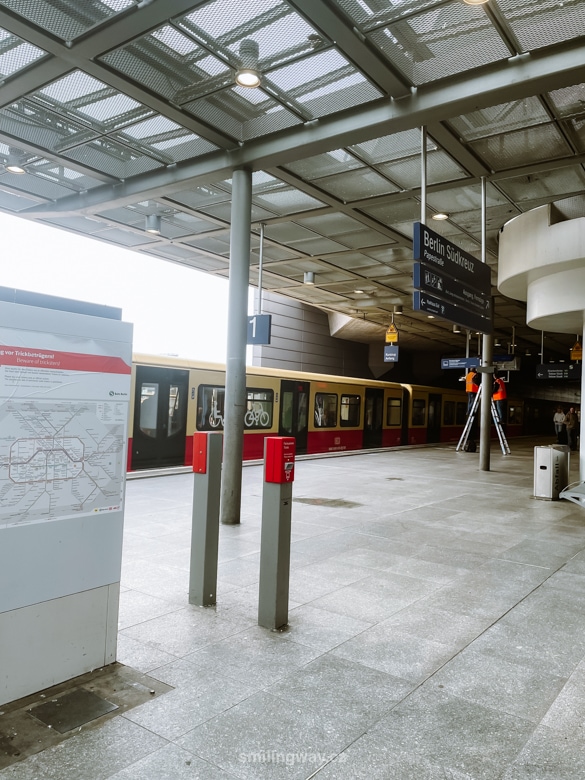
Lines S1, S2, S25 and S26 run through the city centre and connect major stations such as Friedrichstraße, Potsdamer Platz and Anhalter Bahnhof. The S41 and S42 are also important lines that run around the centre of Berlin and connect many parts of the city – the S41 runs clockwise and the S42 counterclockwise.
What time does the S-Bahn run in Berlin?
The S-Bahn operates from 4:30 am to 1:30 am on weekdays, with a peak frequency of 5-10 minutes. On weekends and holidays, most lines operate 24 hours a day, with trains running every 15-30 minutes at night.
HOTELS IN BERLIN 😴
TRAMS
Trams are an integral part of public transport in Berlin, especially in the eastern areas where they are more widespread.
Tram lines in Berlin are divided into “M” (MetroTram) lines and regular lines:
- MetroTrams: These trams run continuously and offer more frequent service, especially at night and on weekends. They are identified by the letter “M” followed by a number (e.g. M1, M2). MetroTrams mainly crisscross the city centre and the surrounding area.
- Regular trams: These lines operate on other routes, are marked only by number and run at lower frequencies.
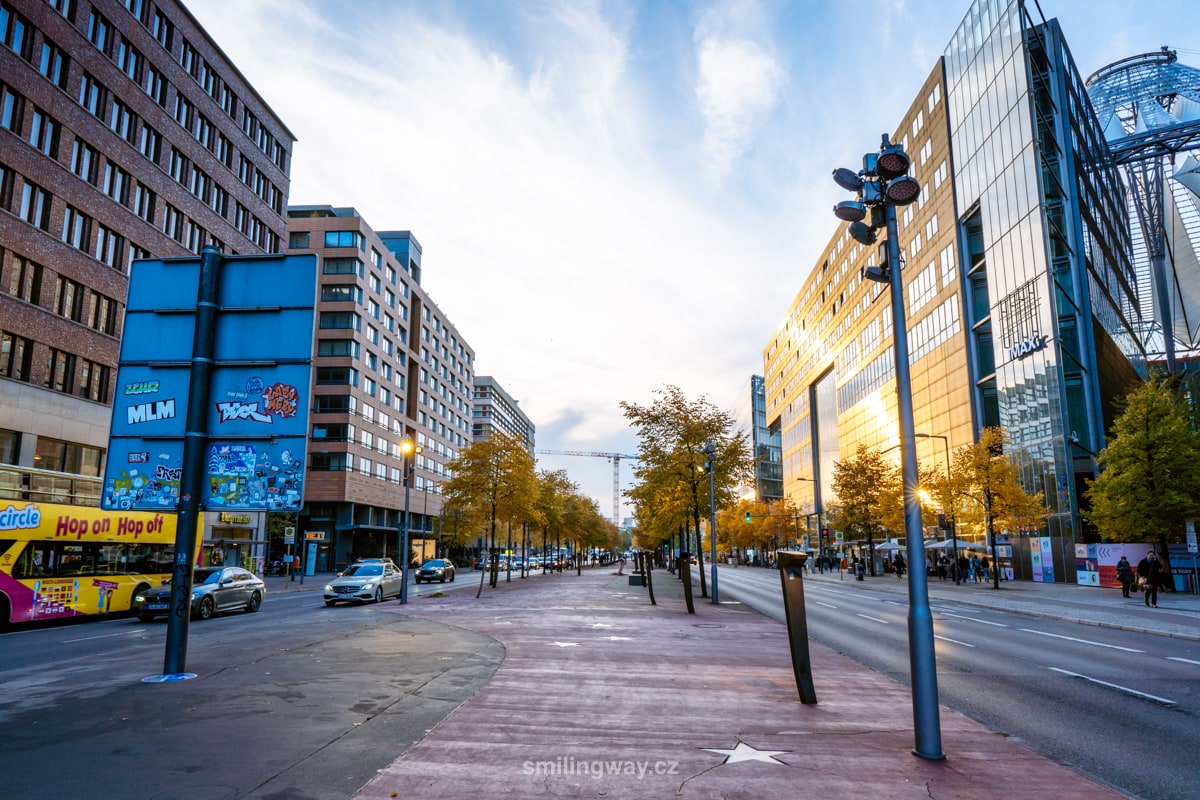
How do trams work?
Tram stops are marked with a green H. They are equipped with electronic boards and shelters with seating. Some also have ticket machines.
If you have a paper ticket, you must mark it at the turnstiles located at several points inside the tram after boarding.
One of the most famous trams is the M10, or “party tram”, which connects the nightlife venues of Friedrichshain and Prenzlauer Berg. At the same time, it passes through Warschauer Straße, which is a major transport and entertainment hub. The M1 tram runs through the historic streets of Mitte, past Museum Island and Hackescher Markt.
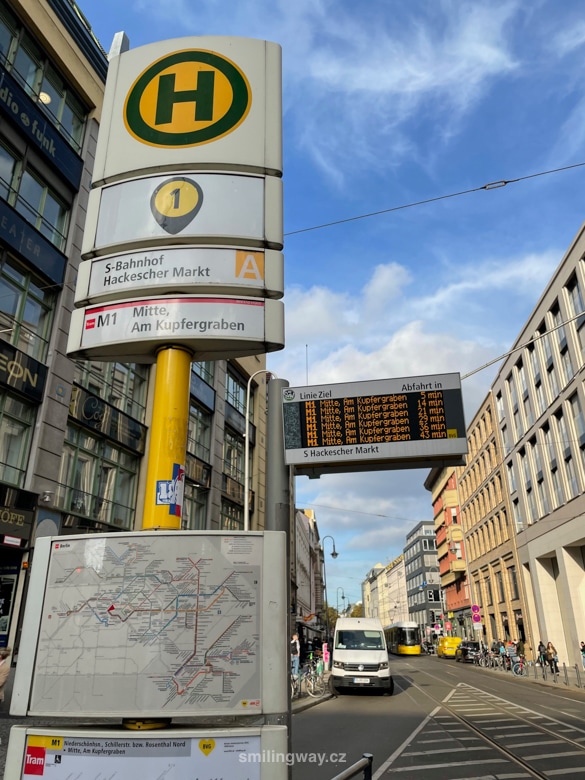
How often do the trams run?
Trams usually run from 4:30 am to 1:00 am with a frequency of 5-10 minutes during peak hours and 10-20 minutes off-peak. MetroTrams run more frequently throughout the night, especially on weekends.
BUSES
The bus network in Berlin is extensive and includes more than 300 daytime bus routes and approximately 63 night bus routes (N lines). The network covers not only the city centre, but also the suburbs and areas not reached by the S-Bahn and U-Bahn. Night lines run after the regular metro and train lines have finished.
Berlin is one of the few cities where double-decker buses are commonplace. If you want to enjoy a great view of the city, the double-decker bus is a great choice.

How do the buses work in Berlin?
Berlin’s city buses operate in the same way as trams. Upon boarding, you will check your ticket at the turnstile (if you do not have an electronic ticket). The stops are marked with a green H.
Buses are equipped with announcement systems that provide audio and visual information about stops and routes.
The 100 and 200 buses are among the most famous lines for tourists, as they pass by the most famous sites in Berlin, including the Brandenburg Gate and the Reichstag.
Regular bus lines are supplemented by M-Bus lines. They run more frequently and have fewer stops, so they’re a great option when travelling longer distances.
How often do the buses run?
Most bus routes operate from 4:30 am to midnight with a frequency of 5 to 20 minutes depending on the route and time of day. Night buses run most often once every 30 minutes.
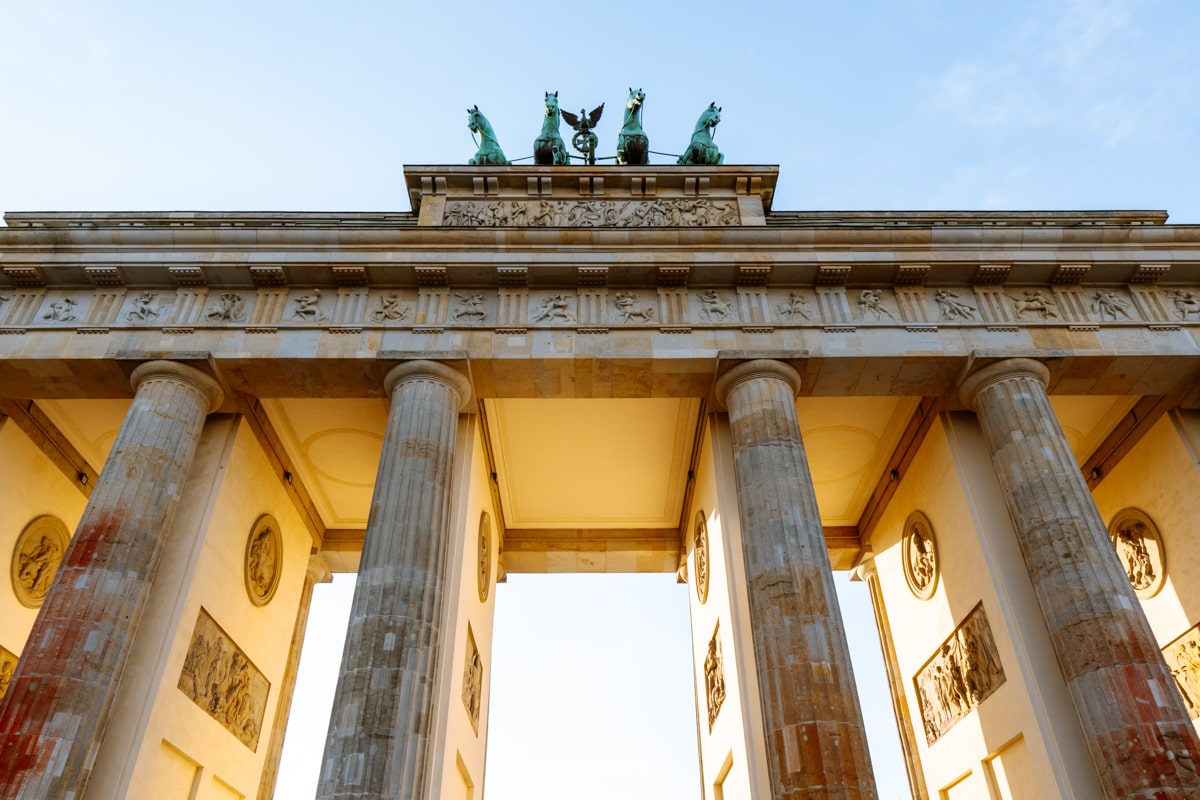
HOW MUCH DOES PUBLIC TRANSPORT COST IN BERLIN?
Berlin’s public transport is fully integrated and tickets are valid on all means of transport, i.e. you can take the U-Bahn, S-Bahn, tram and bus on one ticket. This makes it much easier to get around the city.
Please note: When purchasing your ticket, you must take into account which zone you will be in – AB, BC or ABC. Berlin itself is in zone AB and the immediate surroundings of Berlin (Potsdam, airport) in zone C.
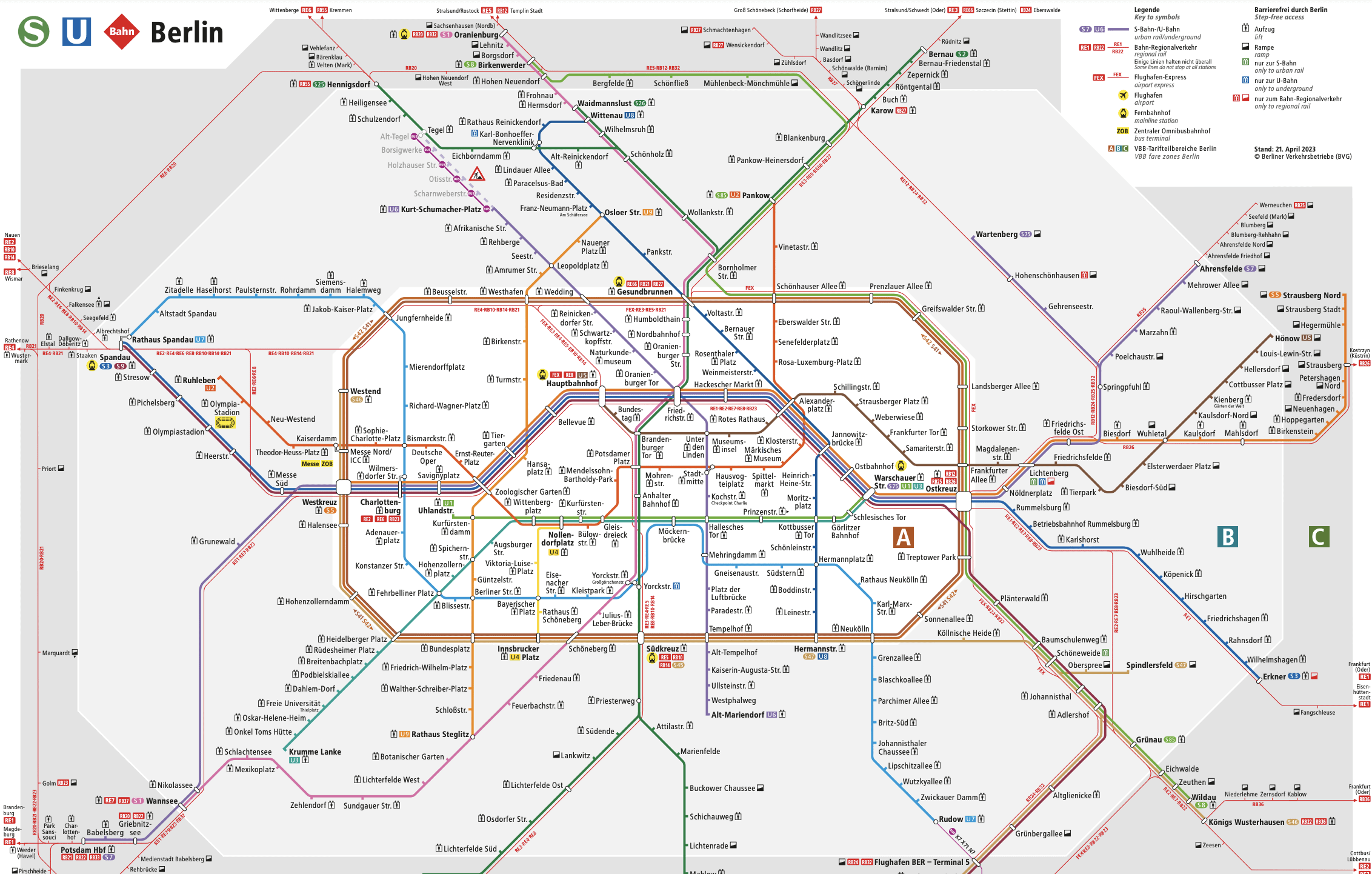
Types of tickets for transport in Berlin
Single ticket
A single ticket in zone AB costs €3.20 (€ 2 for children aged 6-14) and is valid for up to 2 hours. You can change trains, but the ticket cannot be used as a return ticket. There is also a package of 4 tickets for the price of €10 (€6.20 for children).
A single ticket for the ABC zone costs €4 (€2.90 for children aged 6-14) in one direction. Again, 2 hours with the possibility of transfer. There is also a package of 4 tickets for the price of €14.40 (€10 for children).
If you have bought a ticket for zone AB and need to go to zone C, you can buy a so-called “C” ticket. Extension ticket for €2 (€1.60 for children 6-14 years).
Short-term ticket
Another option is a short-term ticket for 20 minutes for €2.20 (€1.70 reduced for children), which you should consider in the following cases:
- you travel 3 stops on the U-Bahn and/or S-Bahn (you can change trains)
- you travel 6 stops by bus or tram (you must not change trains)
There is also a package of 4 tickets for €6.60 (€5 for children).
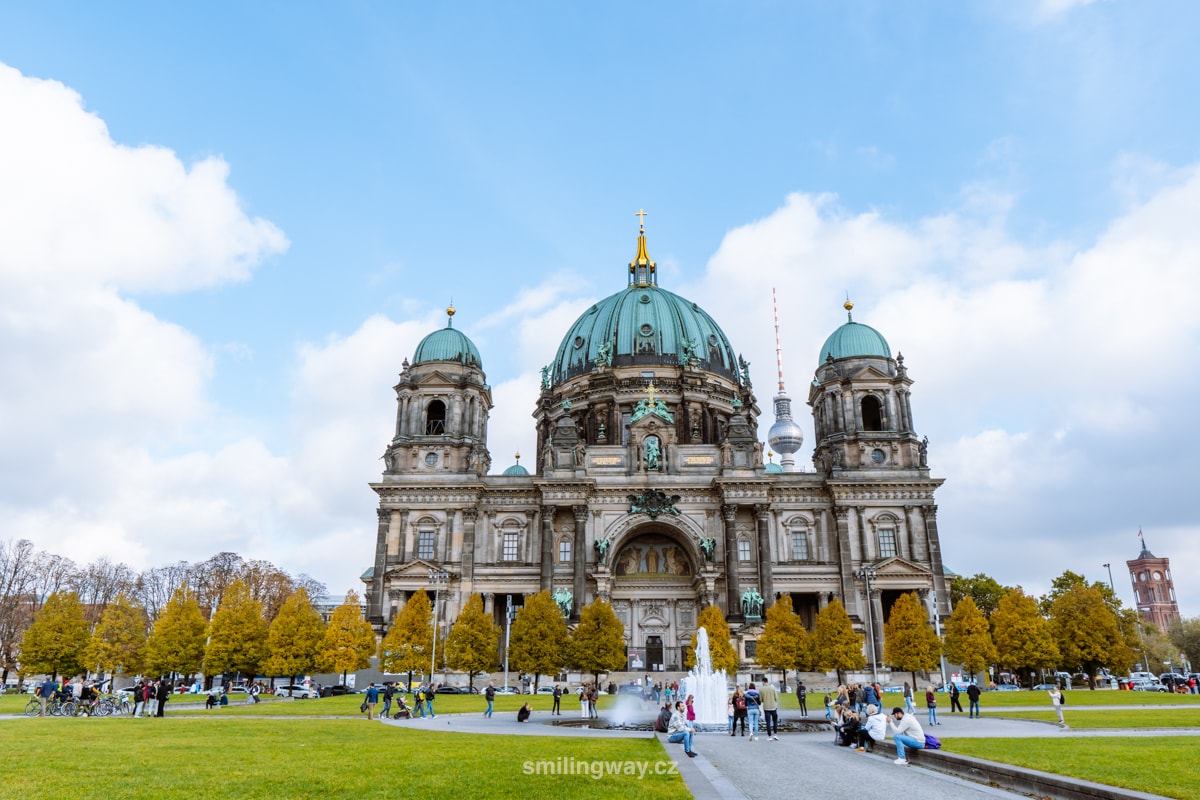
One-day ticket
If you plan to travel more or want to enjoy the convenience of a day ticket, a day ticket with unlimited travel in zone AB costs €9.50 (includes up to 3 children aged 6-14). In the ABC zone, the price is €10.70.
There is also a group day ticket for €29 for AB zones and €31 for ABC zones.
Berlin WelcomeCard
Berlin WelcomeCard is a tourist card that gives you unlimited travel around Berlin and discounts on sights and attractions in the city. It includes almost all of the famous attractions including the TV Tower, AquaDom & SEA LIFE Berlin, Tierkpark Berlin and Charlottenburg Castle.
The card is valid for 48 hours to 6 days, so you can choose the card for as long as you prefer. The price varies depending on whether you choose the Berlin WelcomeCard with transport in zones AB or the Berlin WelcomeCard with transport in zones ABC (including the airport and Potsdam).
You can purchase the card at this link – then you will receive the card in electronic form directly to your email. You don’t have to go anywhere anymore.
Are there discounts on public transport in Berlin?
Children up to 6 years of age travel free of charge and older children aged 6-14 travel at a reduced fare. Fare discounts do not apply to students or seniors unless you are a resident.

☞ Check out the best hotels and accommodation in Berlin for every budget.
WHERE TO BUY TICKETS FOR THE MHD IN BERLIN?
Tickets can be purchased at the following locations:
- in vending machines at railway stations (accept cash and cards)
- at the BVG and S-Bahn sales offices
- authorised kiosks and shops
- BVG mobile app
BVG’s mobile app is very clear and intuitive, unlike the vending machines which I found a bit complicated to select a ticket. You register at the beginning and then you can select the ticket you need right away.
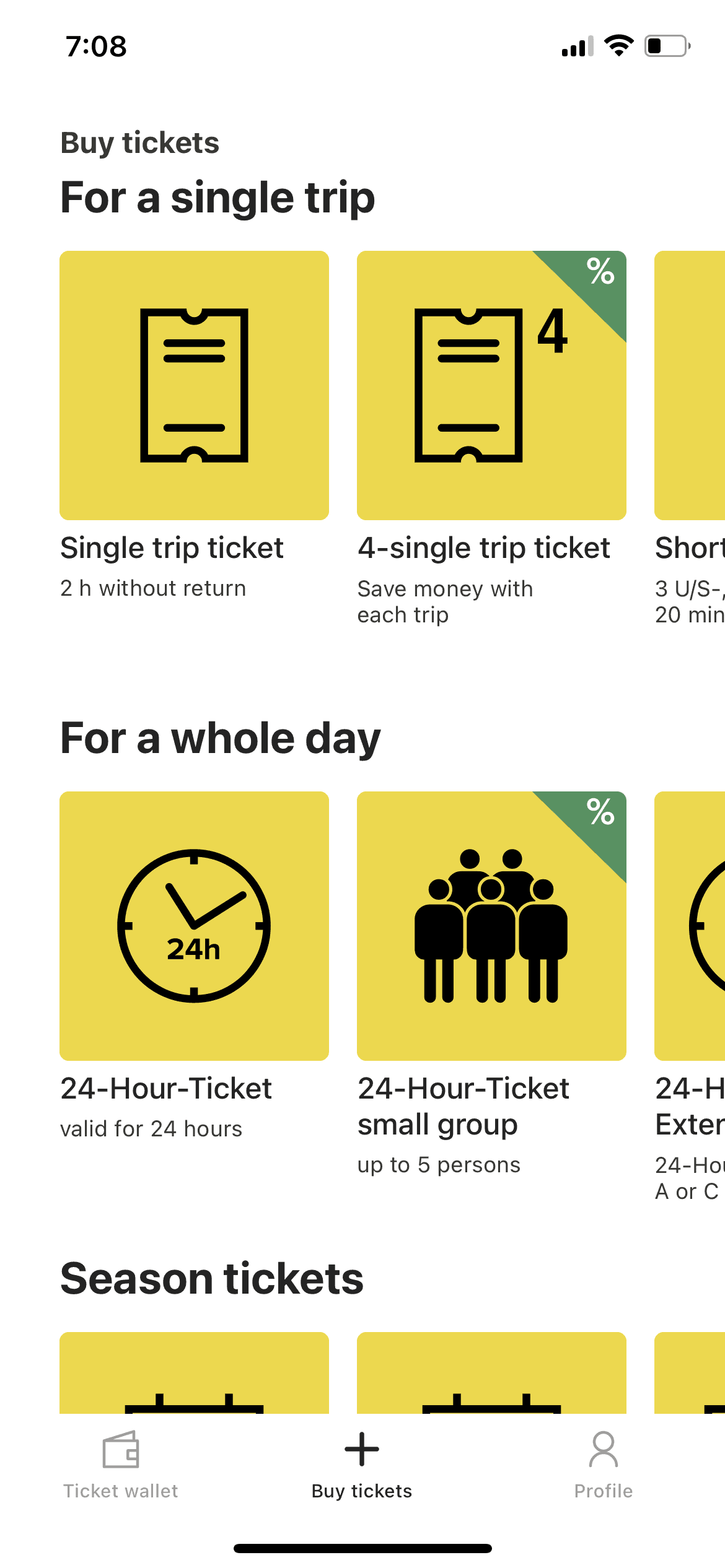
Note: Before boarding the train, check your ticket using the stamping machines (small yellow or red turnstiles) found on the platforms and on trams and buses. If you have an e-ticket from the BVG app, you do not need to mark or activate it anywhere.
☞ Here are the best things to do in Berlin (including practical information and a map).
BOAT CRUISE
Boat cruise is one of the most popular activities in Berlin. And no wonder, because the Spree River is lined with historic and architecturally interesting buildings. See Museum Island, Berlin Cathedral or the Reichstag Building from a different perspective. You can book your cruise here.
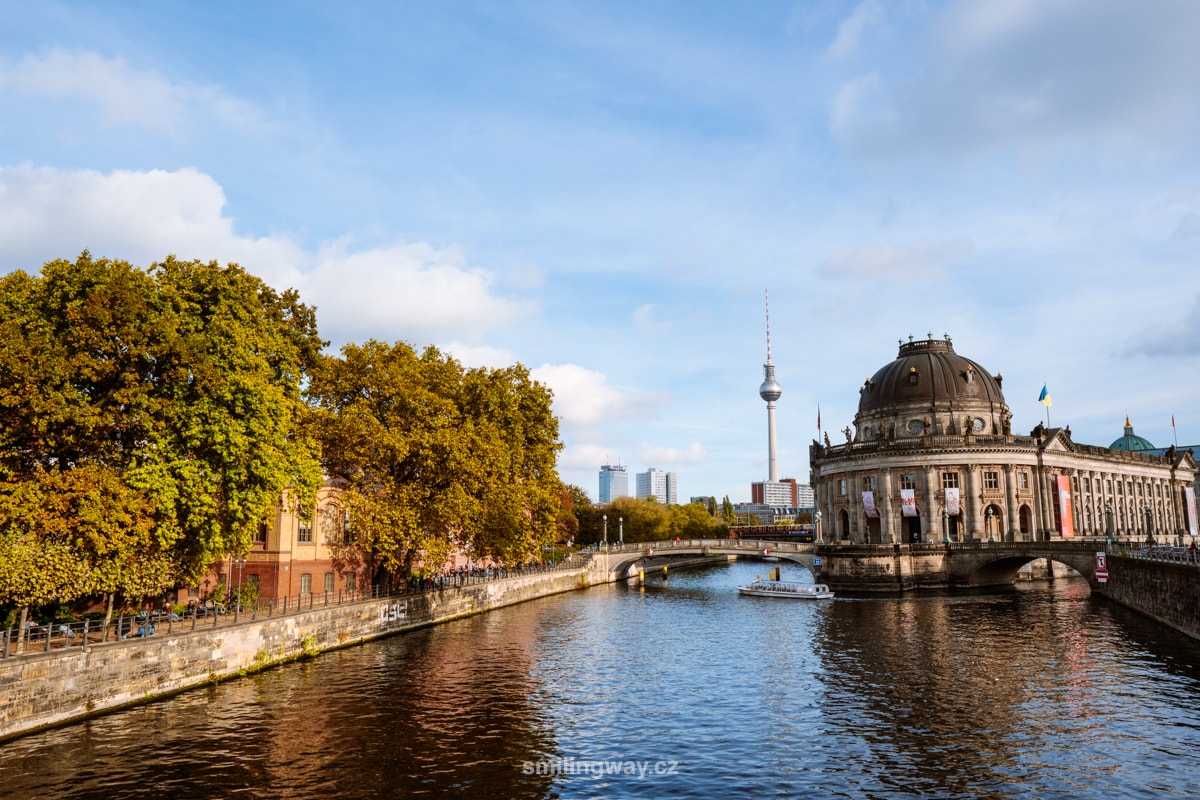
RENT A BIKE IN BERLIN
If you’re tempted to rent a bike in Berlin, it’s very easy. The city is bicycle friendly (although not as much as Copenhagen or Amsterdam, for example). Berlin is relatively flat, and a ride around the Spree River or through the Tiergarten Park is a great break from the sights.
Bike stations are scattered throughout the centre, but you can also find them in the surrounding neighbourhoods. The most common is Nextbike, for electric bikes or scooters then Tier or Bolt. The rental price for a bike starts at €1 for 15 minutes, with a maximum of about €15 per day. You can find specific prices directly in the app.
☞ Get inspired with our itinerary for 3 days in Berlin.
How to rent a bike and scooter in Berlin?
To rent a bike or scooter, you’ll need a credit card and the app of the company you’ve chosen – for example, Nextbike, Tier or Bolt. With Nextbike, you can rent a bike via QR code – open the app and scan the QR code, which you’ll find right on the bike. With Bolt, you just open the app and request a scooter/electric bike.
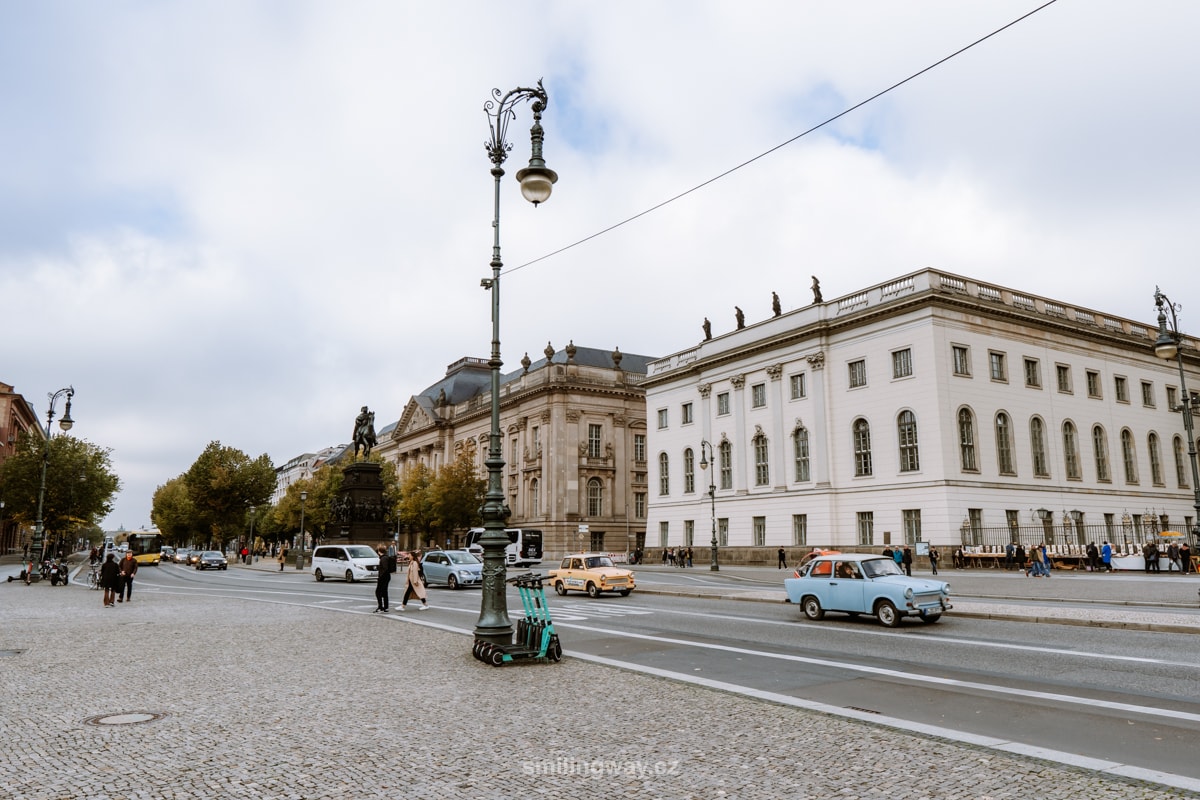
TAXI, UBER OR BOLT?
In Berlin, you can use taxis, Uber and Bolt. Each service offers slightly different services, depending on what you prefer.
Some of the most prominent taxi companies in Berlin are Taxi Berlin, Würfelfunk, TaxiFunk Berlin, Quality Taxi, City-Funk Berlin and Funk Taxi Berlin. If you’re looking for a single app to call a taxi, use Free Now, which is the most widely used.
The basic charge for a taxi in Berlin is €3.90, the charge per kilometre is about €2.30 for the first seven kilometres and €1.65 for each additional kilometre. If you are taking a short journey, you can take advantage of the special rate of €6 per 2 kilometres.
Uber’s advantage is its diversity – there are vehicles for passengers with pets, environmentally friendly vehicles or vehicles with wheelchair access. It’s cheaper than a taxi, but more expensive than the Bolt, which we’ll talk about now.
The Bolt is widespread, so taxis and Uber compete on lowest price. A great advantage is its integration into Google Maps.
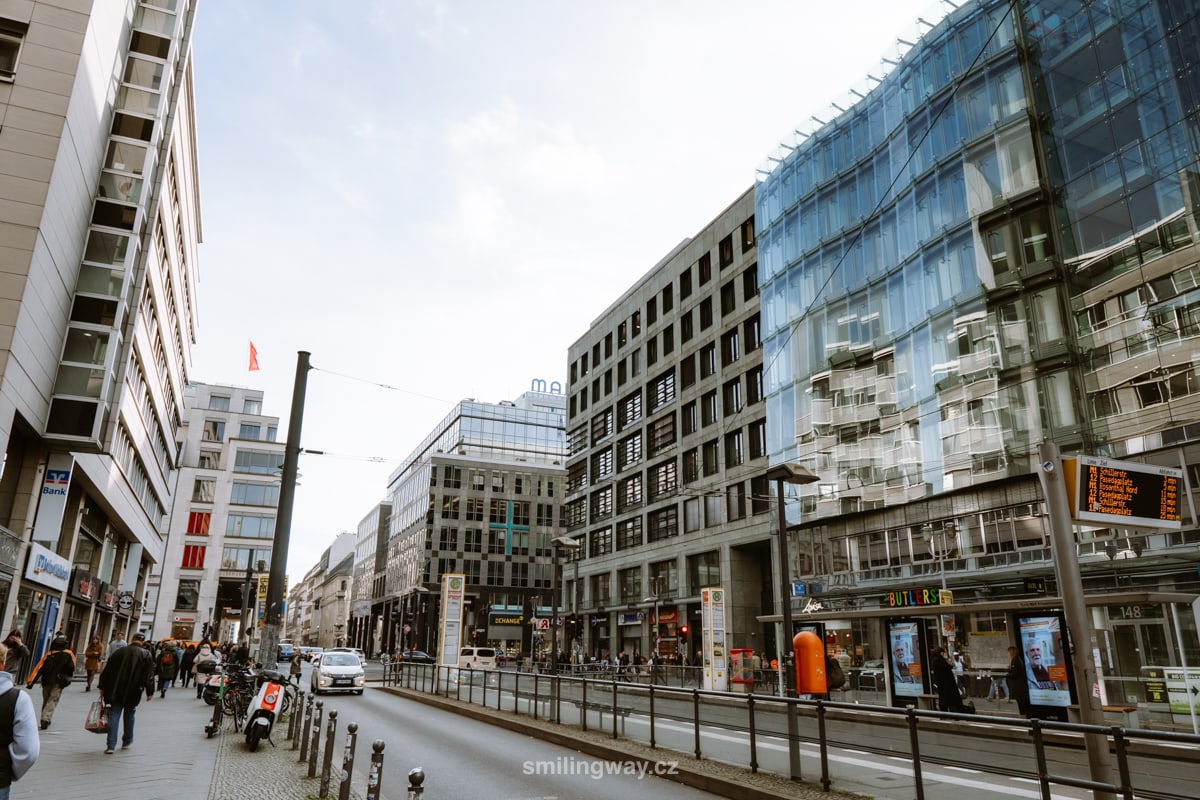
This was our guide and tips for transport and metro in Berlin. Do you have a question? We’ll be happy to answer it in the comments below. Have a safe journey!
More information about Berlin
BERLIN: Get inspired by our tips on things to do in Berlin. Here is the itinerary for 2 days in Berlin. Do you have more time? Check out the itinerary for 3 days in Berlin.
This article tells you all about travelling by car to Berlin. Or do you travel by public transport? Here are the options for getting to Berlin by bus and train.
We have also written a detailed guide to transport in Berlin. Check out the best hotels and accommodation in Berlin for every budget.
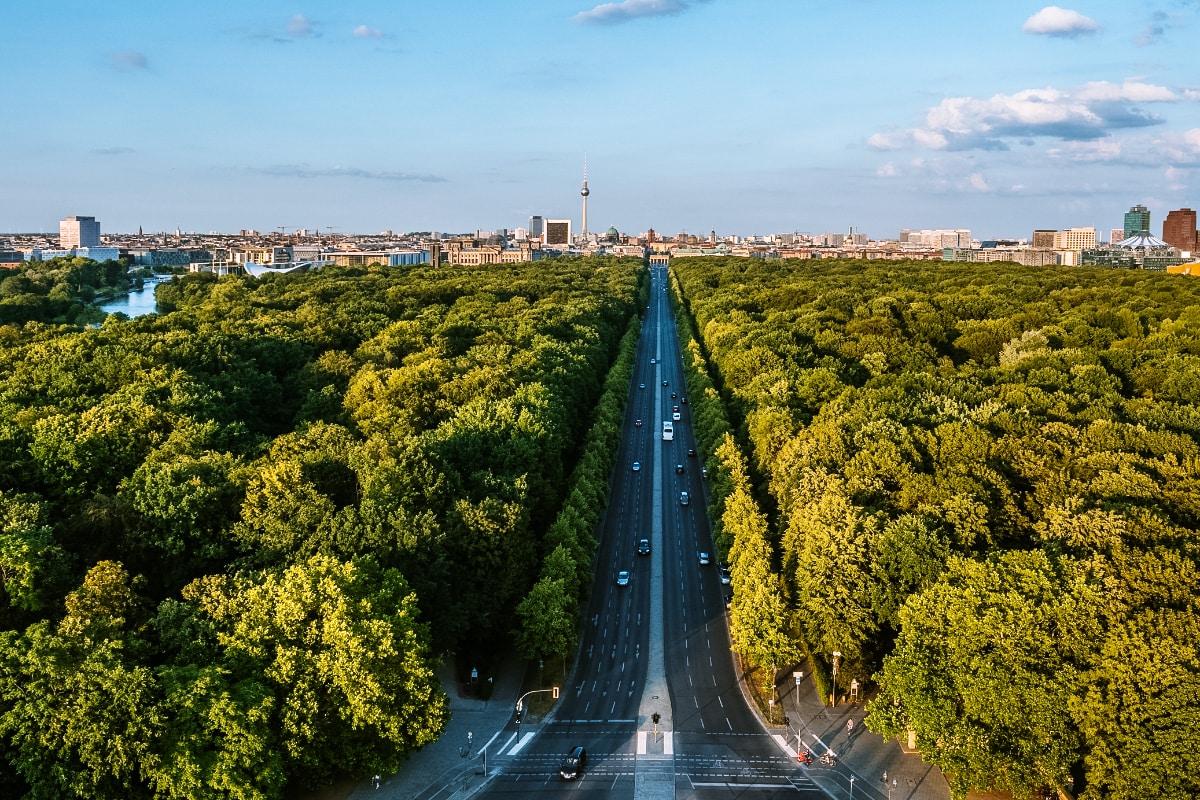
Plan your trip quickly and easily. If you buy something through our links, we get a small commission. You pay nothing extra. Thank you!
Frequently asked questions about transport in Berlin
Berlin’s public transport system includes the U-Bahn, S-Bahn, buses and trams. All transport components are fully integrated and you can switch between them seamlessly.
You can pay for public transport with different types of tickets and travel cards, such as single or short-term tickets, day passes or the Berlin WelcomeCard. Tickets can be purchased at ticket machines at metro stops and stations or on the BVG app.
The U-Bahn runs 4:00-1:00 and the S-Bahn 4:30-1:30. The U-Bahn and S-Bahn run all night on Fridays and Saturdays, as do some tram lines. The buses operate between 4:30-00:00. After midnight they are replaced by night buses, which largely follow the U-Bahn route.
Yes, integrated tickets like single tickets or day tickets allow you to use all public transport in Berlin with a single ticket.
Berlin’s public transport is generally safe thanks to regular police patrols and camera surveillance. Groups of drunk people may congregate at some S-Bahn stations, but they are usually not a danger. As in any other major city, it is better to be vigilant and watch your belongings against pickpockets.
Yes, Uber is a popular ridesharing option in Berlin because it offers a variety of transportation options, including electric vehicles. In recent years, Bolt has also joined the fray, competing on price and Google Maps integration. In addition to Uber and Bolt, taxis are still very common in Berlin, and you can simply call them via the Free Now app. You’ll also find them at all major areas, including the airport.
